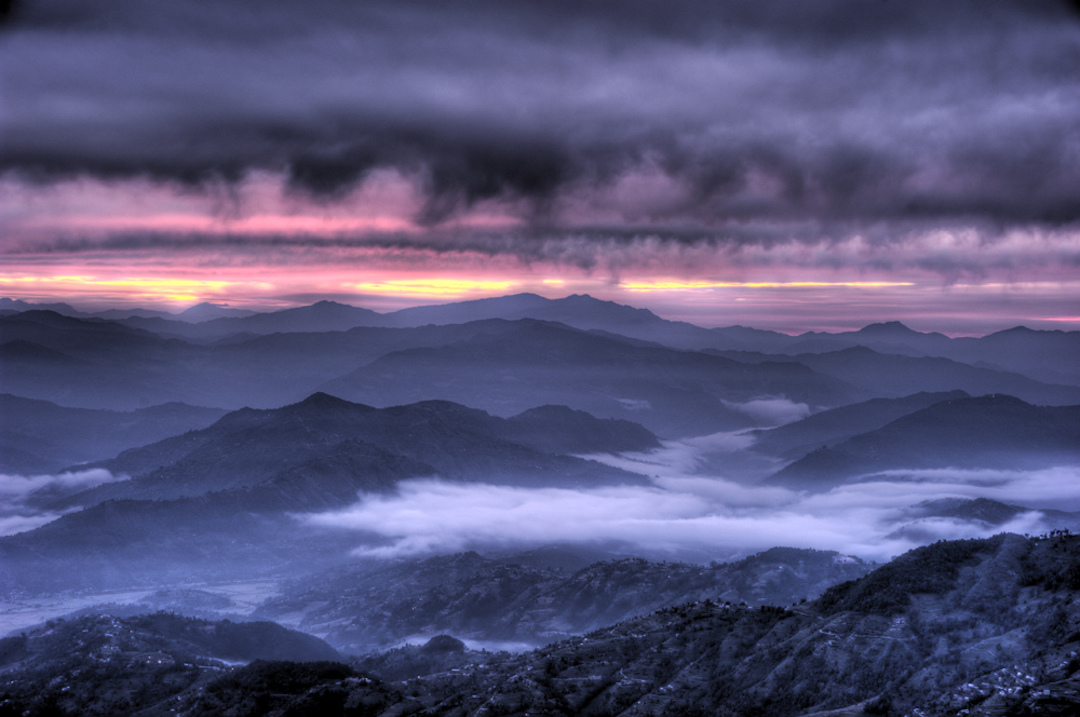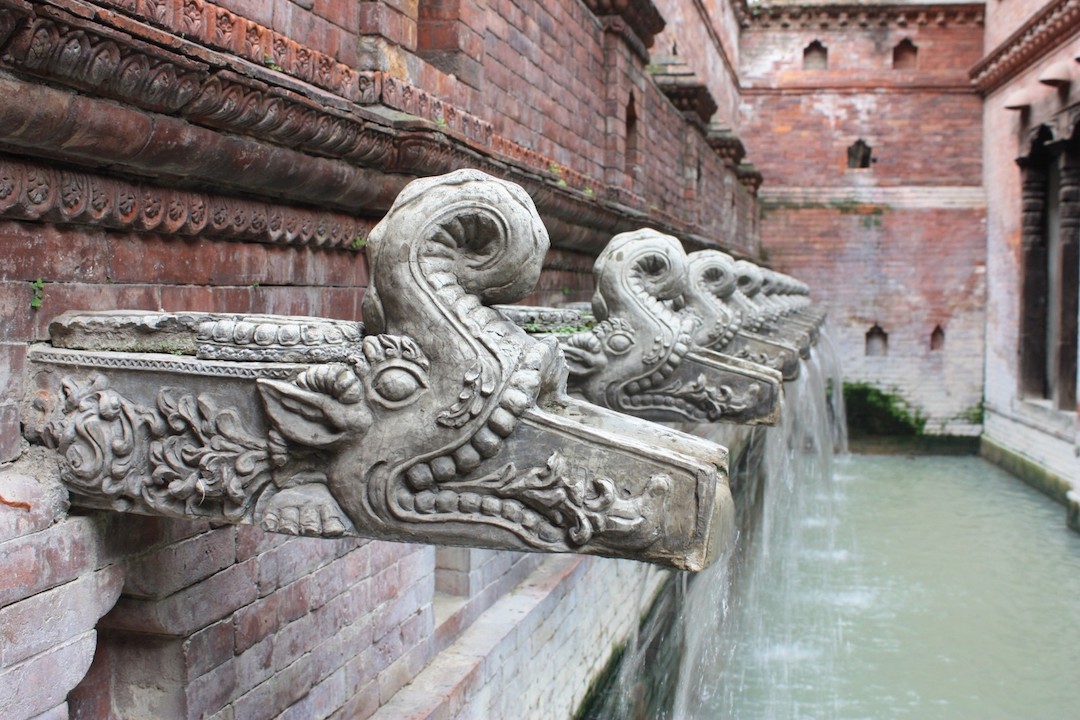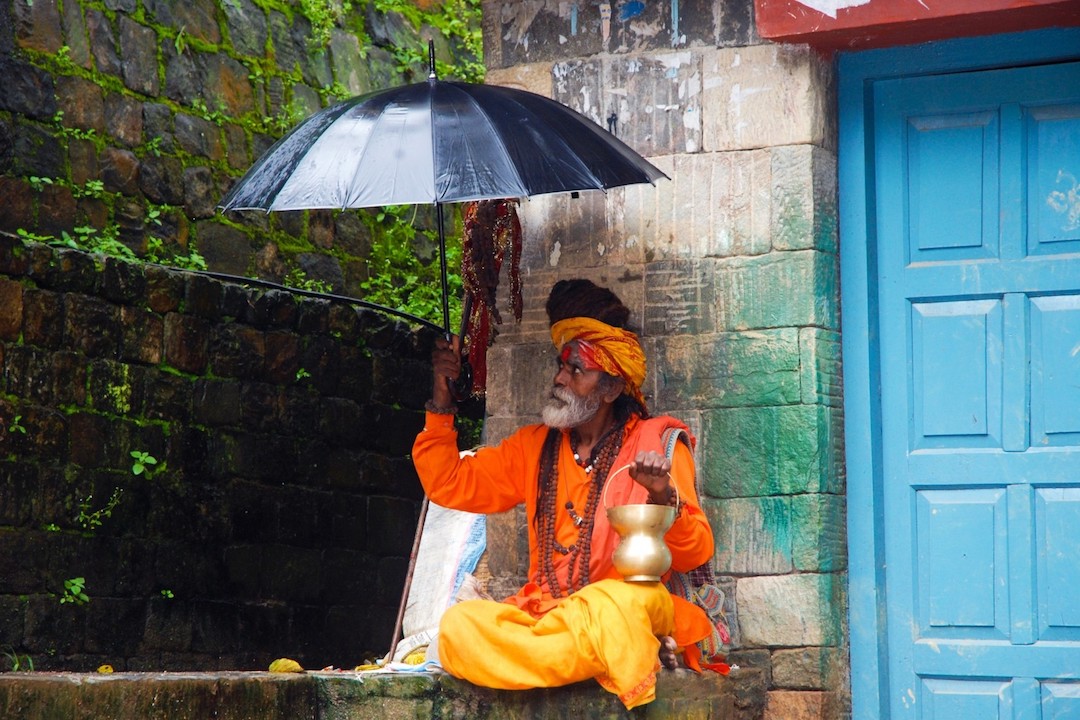Nepal still evades travellers’ bucket lists, and we for one can’t understand why: the views are stunning (you have jungle, lakes, and mountains), the people are friendly, it’s home to once-in-a-lifetime treks and it’s safe and affordable. So what are you waiting for? Here are our 17 reasons to visit Nepal in 2018.
1. Trek to Everest Base Camp

Photo credit: valcker via Visual hunt / CC BY
People flock from all over the world to attempt the arduous (but doable) hike to Everest Base Camp (the South side, as the North Base Camp is in Tibet). At an altitude of 5,364 metres (nearly 18,000 feet) and some of the best mountain views in the world, the multiple-day trek is well worth the effort. Of course you’ll want to remember to take it slow and steady, with lots of training completed beforehand so that there are no surprises while you’re completing the 5 to 6 day hike to camp. Oh and remember to acclimatise, acclimatise and acclimatise!
2. Learn the culture of Kathmandu

Photo credit: xiquinhosilva via Visual hunt / CC BY
The capital of Nepal, Kathmandu is a cultural hub and somewhere you must visit to get the most out of the country. It’s a chaos of sounds, smells and action and will introduce you to a unique side of Nepal. Visit Durbar Square, dating back to the third century, where the city’s kings were crowned and legitimised, surrounded by courtyards and temples. In 2015, a devastating earthquake hugely affected Kathmandu, but the spirit of the city lives on and tourists continuing to travel here is vital to its survival.
3. Admire the Boudhanath Stupa

Photo credit: sadhuism via Visualhunt / CC BY-SA
The largest stupa (a Buddhist shrine with a dome shape) in Nepal and the holiest Tibetan Buddhist temple outside Tibet, the Boudhanath Stupa in Kathmandu is a sacred place. Each part of the building represents stages to the path of enlightenment, with the eyes painted on each side of the gilded tower showing the all-knowing nature of the Buddha as well as the elements of earth, water, fire, air and ether (the fifth represented by another Buddha enshrined in the centre). There’s more symbolisation surrounding this impressive structure that we could go on about forever, but we figure the best way to appreciate it is to head to Nepal yourself and learn more about this fascinating place.
4. Hike the Annapurna Circuit

Photo credit: Doug Letterman via Visualhunt.com / CC BY
The Annapurna Circuit is one of the world’s best hiking routes, starting in Pokhara. It covers between 160-230km at an altitude of 5,416m on the Thorung La Pass, touching the edge of the Tibetan plateau. It’s a tough trip, taking multiple days (we’re talking from 9 to 25 days), usually anticlockwise because of the more gradual gradient, traversing through a variety of landscapes as well as, of course, the famous and dramatic Himalayan mountains.
5. Spot Rhinos and Tigers

Photo credit: flickrfavorites via Visual hunt / CC BY
Not many people think of Nepal as a place abundant with wildlife, but oh, how wrong they’d be. Nepal has a large, diverse population of bird species, and if that’s not hardcore enough, head to Chitwan or Bardia National Park for a safari, tracking down crocodiles, rhinos, deers and the elusive Bengal Tiger. It’s also one of the few countries which is the habitat of clouded leopards (like leopards with bigger spots, but much more elusive), living high in the mountains, thought until recently to be extinct in Nepal.
6. It’s perfect for adrenaline junkies
The jungle isn’t just for safaris, the wild environment is also perfect for adrenaline junkies. Whether it’s crossing the country by mountain bike, motorbike, rafting the rivers, mountaineering, hitching hot air balloon rides or bungee jumping, you’ll find an adventure ideal for you, with the bonus of stunning landscapes passing you by. For an extra adrenaline rush, why not try some waterfall ice climbing – literally using ice picks to scale vertically up a frozen waterfall – in Lantang Valley or Annapurna Sanctuary.
7. The number of World Heritage Sites

Photo credit: DeeMakMak via Visualhunt.com / CC BY-ND
You’d be hard pressed to find a place with quite as many UNESCO World Heritage Sites as Nepal – in Kathmandu Valley alone, there are seven sites (which count together as one World Heritage Listing, but that’s by the by), with additional ones in Chitwan National Park and Lumbini. So if you’ve got a plan to visit as many UNESCO World Heritage Sites as you can, a visit to Nepal will give you a big jump in the right direction.
8. It’s affordable
With hotel rooms for less than (and guesthouses sometimes as little as ), food for a day at and budget experiences and activities, Nepal is a surprisingly affordable destination for travellers – it’s pretty easy to spend about or less than a day. Of course, there are the more expensive options, like top hotels at around 0, but even with these, you’ll be getting one of the best rooms in the building. In the countryside, you shouldn’t be looking to spend more than a night for a very comfortable stay. So if money is your Everest, this trip will be no problem for you.
9. The diversity and acceptance of religion
Most of Nepal’s population practice Hinduism, but as already mentioned with the many stupas around, there is a heavy Buddhist influence, and also some Kiratism, Islam and Christianity, although in smaller populations. Because of this diversity of religion and multiculturalism, travelling around different parts of Nepal and learning about each region’s customs is an enlightening experience and shows what a unique place it is to visit.
10. The beautiful lakes

Photo credit: DeeMakMak via Visualhunt / CC BY-ND
There are over 200 lakes in Nepal with a glacier origin – blame those high-altitude mountains we keep on going on about – which often gives them a stunning, vividly blue colour. The lakes in Nepal range from the instantly gratifying, being close to cities and some which take a couple of days to get to (so you really know you’ve earned the view). Head for the Gokyo Lakes (the world’s highest freshwater lake system) and Tilicho Lake, which is conveniently on the Annapurna Circuit trek.
11. The peace and serenity

Photo credit: DeeMakMak via VisualHunt / CC BY-ND
With Buddhist influence, plenty of lakes and stunning views, it’s no wonder that the Nepalese are regarded as happy people and Nepal itself has been considered a sacred place for many years. This is where to go if you want to get away from it all: it’s spiritual and perfectly allows for some quiet contemplation whether you’re trekking, temple-hopping or gazing over a still, glass-like lake. Believe it or not, even the adrenaline-pumping adventures will offer some serenity – how could it not when Nepal has this much unrivalled beauty?
12. Volunteering opportunities

Photo credit: DFAT photo library via Visualhunt / CC BY
While Nepal is a country full of happy people, it’s still a developing one, so there are plenty of volunteering opportunities you can take up to get involved in the culture and help. Nepal is somewhere you can really travel with a cause, especially after the 2015 earthquake. You will gain incredible insights and create some special bonds with people from entirely different backgrounds and cultures to you and potentially change your whole outlook on life.
13. Great for family adventures

Photo credit: Sharada Prasad via Visualhunt.com / CC BY
If controlling the demands of children and keeping them busy so they’re exhausted by the end of the day is your priority, then you and Nepal are going to get on swimmingly. With an eclectic array of activities, like trekking, wildlife watching, biking and more, Nepal offers excitement to its peak. Plus, kids will be exposed to a different culture from a young age, which can only be a good thing.
14. The quaint village of Bandipur

Photo credit: Richard Friedericks via VisualHunt.com / CC BY-SA
Located within a national park engulfed in green hilltops, Bandipur is a charming little village that isn’t too well known to tourists (but it’s getting there, so start hustling!). The village was once an important stop on the India-Tibet trade route, until it was bypassed by the Prithvi Highway in the 60s. The preserved, cultural village gives the feel of stepping back in time, and there are plenty of lush trails to spend your days leisurely exploring.
15. Nepalese cuisine

Photo credit: jreifegerste via VisualHunt.com / CC BY-SA
With many different backgrounds and ethnicities, Nepal’s food is inevitably not to be missed. While the cuisine is influenced heavily by its neighbours, China and India, Nepal makes it their own and it’s generally more healthy than other countries in South East Asia. The dishes Dhal bat (lentil or chicken curry, boiled rice with vegetables, pickles and roti bread) and momo (Nepal’s version of dumplings) are must-tries.
16. Get to know Buddha’s birthplace

Photo credit: Carlos Adampol via Visualhunt / CC BY-SA
Around 563 BC, Buddha – also known as Siddhartha Gautama – was born in the UNESCO World Heritage Site, Lumbini (although it wasn’t listed back then, obviously). This area is understandably a huge Buddhist pilgrimage site, particularly to Maya Devi Temple, the spot where Queen Maya Devi gave birth. There are a number of ancient stupas, prayer flags and congregating monks that make this stop on your Nepal adventure one of the most unique.
17. It’s safe

Photo credit: JonnyScholes via Visualhunt.com / CC BY
Crime isn’t a major risk for travellers, and it is politically stable, so while there are the classic things like not drinking tap water and being as aware as you would under normal circumstances elsewhere, Nepal is a safe place to travel. Nepal is a place where you’re looked out for, and although there are difficult hikes, the paths are clear, guides are available, and any of the dangers are things you can prepare for, like experience level and altitude sickness.
Source: https://www.tourradar.com/days-to-come/17-reasons-to-visit-nepal/




